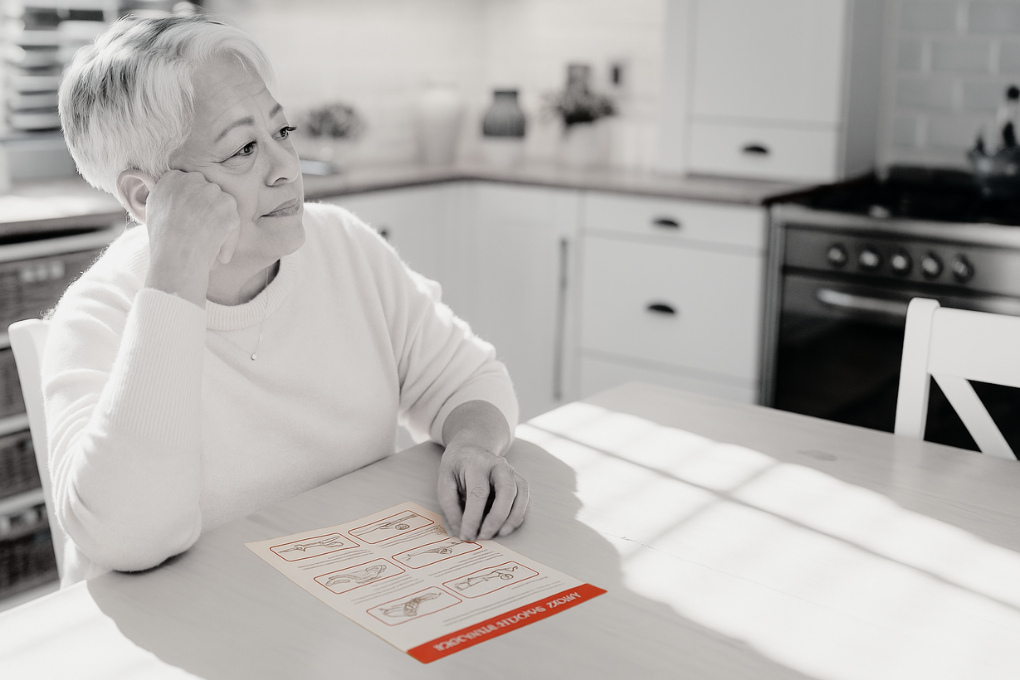
Outpatient hip and knee replacements are one of modern surgery’s success stories – patients get new joints and go home the same day. But there’s a missing metric that rarely makes the post-op checklist: patient confidence. Surgeons skillfully replace joints and send patients home within hours. What happens next, between discharge and the first PT session? Many patients hit what we call the “confidence curve”: an initial high of “I’m home!” followed by a dip in morale, doubt, and fear before physical therapy or recovery milestones start to rebuild their trust.
This isn’t a feel-good idea. It’s a clinically actionable signal. Ignoring it comes at a cost: poor adherence, stalled recovery, unnecessary ER visits. Let’s explore why confidence deserves a permanent seat next to pain scores and range of motion – and what it takes to make it visible.
The hours and days after surgery often start with relief: “I’m home.”
But that feeling can quickly give way to doubt. “Am I doing this right?” “Should it still hurt this much?” “What if I mess something up?”
Early in recovery, it’s common for patients to experience emotional lows well before their first physical therapy visit. In fact, one recent analysis found that by 3 months after knee replacement, 76% of patients reported lingering depressive symptoms (mostly mild) even as their bodies were healing (Neelaraju et al., 2023). Other studies have noted that high early anxiety is a clear predictor of subpar recovery – anxious patients are less likely to stick to their rehab plan, tend to make slower progress, and are more prone to unplanned medical visits for reassurance (Alattas et al., 2016; Knapp et al., 2021).
In short, when confidence dips, so do outcomes.
Clinical literature increasingly supports what care teams have long observed: confident patients recover better. Here’s how:
Despite its importance, confidence doesn’t show up in most recovery protocols. Surgical teams meticulously track joint angles, wound healing, and pain scores – but not whether a patient believes they can heal. And it shows in the data: psychological distress after surgery is vastly under-recognized in the medical record. The study by Knapp and team (2021) on joint replacement outcomes noted that mental health factors like anxiety often go unaddressed in current pathways, with no formal process to monitor or treat these issues as part of standard care . Enhanced Recovery After Surgery (ERAS) protocols emphasize things like early mobility, nutrition, and opioid sparing, but they often omit dedicated psychological reassurance or confidence tracking. In practice, that means a huge gap: only a tiny fraction of post-surgical anxiety or mood crashes ever get coded or flagged, even though they may be common. In short, recovery pathways measure what’s visible – incisions, vitals, range of motion. Confidence isn’t visible, so it’s overlooked until its absence causes a problem.
This is where new digital recovery platforms are stepping up. For example, our platform Engivio blends AI-guided monitoring with human coaching to spot confidence slumps early – when they’re still course-correctable. The system checks in daily with patients, gathering quick inputs on pain, mood, mobility, and self-efficacy. If a patient reports struggling or expresses doubt, we get an instant alert. That prompts timely intervention: perhaps a reassuring message, a motivational tip, or a phone call from a recovery coach or nurse. It’s essentially a post-op safety net focused not just on physical symptoms but on outlook. By tracking the “confidence curve” in real time, we can catch a dip in morale on, say, Day 3 post-op – and address it before it cascades into missed exercises or a panicked hospital visit. Confidence is a leading indicator, not a lagging metric. And with tools like this, it’s finally measurable on a daily basis.
We already track range of motion and pain meticulously. Why not add confidence to the recovery chart? In fact, forward-thinking programs are doing just that. Validated tools like the Oxford Arthroplasty Early Recovery Score (OARS) now include patient mood, confidence, and coping ability as part of structured recovery tracking (Strickland et al., 2020). This kind of metric is a powerful signal – one that has real predictive value. Crucially, it’s actionable: unlike a patient’s age or a comorbidity, confidence can be strengthened with the right support.
Consider what we see in outcomes data when confidence is high vs. low:
In short, confidence isn’t “soft” – it’s a lever. One that can reduce costs, boost functional outcomes, and improve the patient experience.
We’re trained to treat the physical, but post-surgical recovery is never just physical. It’s a cognitive, emotional, and behavioral journey as well. If a patient doesn’t believe they’re on track – that they will recover – everything else becomes harder. The good news is that confidence can be nurtured. By making it visible and measurable, we empower care teams to intervene early: to give an encouraging nudge, to celebrate a small win, or to clear up a scary misconception. In our practice, we’ve seen how a single well-timed reassurance can get a patient back on the rails.
The “confidence curve” shouldn’t be an afterthought; it should be a core vital sign of recovery. Let’s design systems and checklists that elevate patient confidence alongside pain control and mobilization. We’re already doing this at Engivio, and the impact is tangible. When patients feel supported and confident, they do better – and so do our outcomes. It’s time to give confidence a permanent seat in the outpatient surgery playbook.
Sources & Further Reading